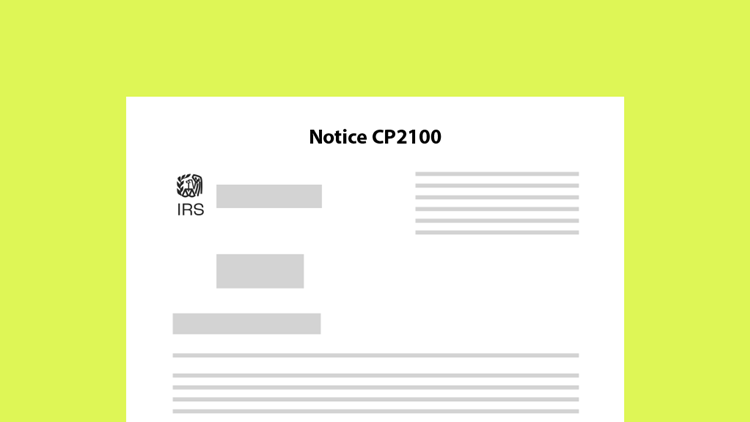by | May 8, 2022 | Tax Tips and News
With the deadline for filing individual tax returns come and gone, tax professionals everywhere are enjoying well-earned downtime. However, taking a little time with business-return clients to get a jump on planning for next filing season could bring unexpected savings. Now is the perfect opportunity to help your business-return clients qualify for deductions—some common and some expiring.

What is the Enhanced Business Meal Deduction?
Historically, business owners had the ability to deduct half the cost of business-related food and beverages at a restaurant. But for tax years 2021 and 2022, that deduction applies to 100% of the cost of the meal.
There are a few qualifications, however, the filer has to meet:
- The business owner or an employee of the business has to be present when the food or beverages are provided.
- The expense can’t be lavish or extravagant.
- Qualifying restaurants include those who prepare and sell food or beverages to retail customers for immediate consumption, whether on- or off-premises.
- Other businesses, such as grocery stores and convenience stores, that primarily sell pre-packaged foods that aren’t intended for immediate consumption, don’t qualify for the 100% deduction.
- And certain employer-operated eating facilities can’t be considered restaurants under the deduction’s requirements—even if they’re operated by a third party under contract.
IRS Publication 463, Travel, Gift and Car Expenses, has more information about deducting business meals, as well as how to keep records for meals.
How do business owners deduct a home office?
There has been an explosion in the number of business owners who work from home, and a lot of them may qualify for the home office deduction. Business clients interested in claiming this deduction have to choose between the regular method and the simplified method.
The regular method starts with the 44-line Form 8829, Expenses for Business Use of Your Home, which separates applicable operating costs into two categories: “direct expenses” that are fully deductible and “indirect expenses” that are based on the percentage of the home used for business. Indirect expenses are usually items related to the home itself:
- Real estate taxes
- Mortgage interest
- Rent
- Casualty losses
- Utilities
- Insurance
- Depreciation
- Maintenance and repairs
The simplified method uses a 6-line worksheet in the Schedule C instructions to figure the deduction, using a fixed $5-per-square-foot rate for business use of the home. Using this method, the maximum deduction is capped at $1,500 (which assumes 300 square feet were used for business).
While being more general in scope, the simplified method does offer other benefits. Those using the simplified method to figure home office deductions aren’t allowed to depreciate the part of the home that’s used for business, but they can use Schedule A to claim home mortgage interest, real estate taxes, and casualty losses as itemized deductions—and they don’t have to be split between personal and business use.
No matter which method is chosen, business expenses beyond the gross income limitation aren’t deductible. Publication 587, Business Use of Your Home, has more information on the home office deduction and how to figure it.
Where can I find other deduction opportunities?
The IRS provides the following publications to guide small business owners and tax pros!
- Publication 535, Business Expenses – information on a wide range of business deductions
- Publication 946, How to Depreciate Property – information on major expenses, such as depreciating buildings, equipment, and other assets
- Publication 334, Tax Guide for Small Business -for individuals who use Schedule C, this has tax information tailored to the needs of small business
How do I learn more about small business tax issues?
Earn continuing professional education credits while learning more about business tax topics! The tax-education specialists at DrakeCPE.com have created in-depth courses that can help you better serve small-business clients:
Source: IR-2022-100
– Story provided by TaxingSubjects.com
by | May 1, 2022 | Tax Tips and News
Taxpayers may not be aware, but they have rights when it comes to working with the Internal Revenue Service. The Taxpayer Bill of Rights lists 10 fundamental tax-related rights, ranging from the right to be informed to the right to a fair and just tax system.
The IRS recently highlighted taxpayers’ right to challenge the IRS’s position and be heard as part of its Tax Tip series. This reminder comes roughly a week after the country survived another Tax Day.

What does the right to challenge the IRS’s position and be heard mean?
The right to challenge the IRS’s position and be heard means all taxpayers can:
- Raise objections.
- Provide additional documentation in response to formal or proposed IRS actions.
- Expect the IRS to consider their timely objections.
- Have the IRS consider any supporting documentation promptly and fairly.
- Receive a response if the IRS does not agree with their position.
But what does that actually mean in practice? For example, the IRS has to notify a taxpayer that their tax return has a math mistake or a clerical error. In this case, the taxpayer has 60 days to get back to the IRS and tell them they disagree.
In the meantime, the taxpayer should provide any records (or copies of records) that can help correct the error. Taxpayers can always call the telephone number included in the letter or notice for help from an IRS representative.
If the agency agrees with the taxpayer’s position, the IRS will make the necessary adjustments to the taxpayer’s accounts and send them a correction. However, a different set of expectations come into play if the IRS doesn’t agree with the taxpayer’s argument.
In that case, the IRS will send the taxpayer a notice by U.S. mail that proposes an adjustment to their return and notifies the taxpayer they have the right to challenge the proposed adjustment.
To challenge such an adjustment, the taxpayer has to file a petition in U.S. Tax Court. Usually, this petition has to be filed within 90 days of the date printed on the notice—or 150 days if the taxpayer lives outside the U.S.
Taxpayers undergoing an audit by the IRS have the right to submit documentation and raise objections during the audit. If the IRS disagrees, it issues a notice that outlines why it’s increasing the tax.
The taxpayer retains the right to petition the U.S. Tax Court before they pay the adjusted tax and to challenge the IRS’ decision. Sometimes, such as when enforcement actions are needed to collect a tax debt, the IRS has to provide a taxpayer an opportunity for a hearing before the Independent Office for Appeals. These actions can include placing a levy on the taxpayer’s bank account.
Here, too, the Taxpayer Bill of Rights guarantees options for the taxpayer. If the Appeals Office agrees with the IRS a levy is needed, and files a notice of federal tax lien with the appropriate state court, the taxpayer has the right to petition the U.S. Tax Court.
For more on taxpayer rights, appeals and other information, see Publication 556, Examination of Returns, Appeal Rights, and Claims for Refund.
Source: IRS Tax Tip 2022-65
– Story provided by TaxingSubjects.com
by | Apr 27, 2022 | Tax Tips and News
The Internal Revenue Service says the 2022 Nationwide Tax Forum will kick off July 19, with the classes and online festivities going for more than five weeks.
Live-streamed seminars will be offered every Tuesday, Wednesday and Thursday.

What’s the backstory for the Nationwide Tax Forums?
The Nationwide Tax Forum has been held for the past 30 years during the summer months, becoming the IRS’ top outreach event for tax professionals nationwide. This year’s event is once again being held as a virtual affair, providing an extra measure of security from COVID, while also allowing interaction between participants and experts.
Attending tax pros can have access to expert presentations on tax law, professional ethics, virtual currency, collection issues and other vital topics. A lot of tax professionals can fully satisfy their annual continuing education requirements by registering for the Tax Forum and attending the virtual presentations.
Tax practitioners are being urged by the IRS to register now to take advantage of the virtual program.
What’s on the agenda?
After starting on July 19, 2022’s IRS Nationwide Tax Forum will run through August 18. Registered attendees have the ability to take part in all of the lie webinars, earning up to 28 continuing education credits in the process.
As in years past, IRS Commissioner Charles Retting will kick off the Tax Forum with a keynote address. A plenary session will follow, with updates to tax law and publications.
Attendees then go into multiple sessions, focused on high-interest topics, with presentations made both by IRS experts and partner associations.
For the first time, four seminars—including the plenary session and an ethics webinar—will also be offered in Spanish as well as English. Those who register to attend the Virtual Expo will also have access to additional multilingual resources.
Timing is key if you want a good deal
Those tax pros who register by 5 p.m. on June 15 will qualify for an “Early Bird” rate of $240 per person. On June 16 the standard rate goes up to $289.
Tax pros who are members of one of the IRS national partner associations can save even more, getting a $10 discount off the Early Bird rate—if the register by June 15.
Members should contact their association directly for more information on the discount:
- American Bar Association (ABA) Section of Taxation
- American Institute of Certified Public Accountants (AICPA)
- National Association of Enrolled Agents (NAEA)
- National Association of Tax Professionals (NATP)
- National Society of Accountants (NSA)
- National Society of Tax Professionals (NSTP)
- Low Income Taxpayer Clinics (LITC)
- Volunteer Income Tax Assistance Program (VITA)
Access to the Virtual Expo is included with full registration for the IRS Nationwide Tax Forum. The Expo gives attendees the chance to visit with exhibitors representing dozens of leaders in the areas of tax software, financial services, leading national associations and a number of key IRS offices.
Other attractions within the Virtual Expo include:
- The latest tax products and software
- Representatives from IRS program offices in the IRS Zone, including expanded resources for multilingual engagement
- Bonus Q&A sessions in the Speaker’s Corner after each live session
- Live webinars from many of our sponsors
In addition, a number of small focus groups will be assembled, allowing attendees to directly share their experiences and discuss ideas with the IRS. The 2022 IRS Nationwide Tax Forum registration webpage has the list of topics and qualifications for focus group attendance.
Visit our virtual booth!
Be sure to visit the Drake Software virtual booth this year!
Source: IR-2022-90
– Story provided by TaxingSubjects.com
by | Apr 23, 2022 | Tax Tips and News
Now that the filing season for personal income tax returns has closed, tax professionals everywhere can take a much-deserved breather. Right?
Not so fast.
Another filing deadline lurks just around the corner, albeit not as wide-ranging as the one just past.

Many tax-exempt organizations have to file on or before May 16. This includes those groups that operate on a calendar-year basis and those that file certain informational returns. The May deadline involves:
- Form 990-series annual information returns (Forms 990, 990-EZ, 990-PF)
- Form 990-N, Electronic Notice (e-Postcard) for Tax-Exempt Organizations Not Required to File Form 990 or Form 990-EZ
- Form 990-T, Exempt Organization Business Income Tax Return (other than certain trusts)
- Form 4720, Return of Certain Excise Taxes Under Chapters 41 and 42 of the Internal Revenue Code
There’s only one way to file
Unlike regular income tax returns, many of these tax-exempt returns can only be filed electronically, providing the organization with speedy acknowledgements that the return has been filed with the IRS. It also cuts processing time, and that makes compliance with reporting requirements easier.
Those filing a Form 990, 990-EZ, 990-PF or 990-T for the 2021 calendar year are required to file electronically, as are private foundations filing a Form 4720 for 2021.
An IRS Authorized e-File Provider can file these forms electronically for charities and other tax-exempt groups.
If an organization is required to submit a Form 990-N, the form must be e-filed. They can send it in to the IRS using the Form 990-N (e-Postcard) tool on IRS.gov.
For those unsure just what form their organization needs to file, help is available.
“To help exempt organizations comply with their filing requirements, the IRS provides a series of pre-recorded online workshops,” said Robert Malone, Exempt Organizations and Government Entities Director. “These workshops are designed to assist officers, board members and volunteers with the steps they need to take to maintain their tax-exempt status, including filing annual information returns.”
As with individual income tax returns, the Internal Revenue Service stresses the importance of sending in complete and accurate returns when submitting these tax-exempt informational returns.
If a return is incomplete or is the wrong return for the organization, the return will be rejected. The agency says the most common mistakes for these kinds of return are missing or incomplete schedules.
For those organizations who need additional time to file, a six-month automatic extension is available by filing Form 8868, Application for Extension of Time to File an Exempt Organization Return.
As with regular income tax returns, extending the time to file doesn’t give the filer more time to pay any tax that may be due. Tax-exempt organizations requesting extensions are encouraged to file Form 8868 electronically.
Source: IR-2022-93
– Story provided by TaxingSubjects.com
by | Apr 19, 2022 | Tax Tips and News
The Internal Revenue Service is giving some filers a firm but friendly tap on the shoulder, letting them know some of the forms they’ve filed don’t match up with the agency’s records.
Financial institutions, businesses or even regular individual taxpayers could see a notice in the mail. The notices, CP2100 or CP2100A, go out twice a year from the IRS, notifying taxpayers that their information return is missing a Taxpayer Identification Number (TIN), has an incorrect name—or has a combination of the two issues.
The notices first go out in September and October, then a follow-up mailing goes out in April the following year.

The information returns covered by these notices include:
- Form 1099-B, Proceeds from Broker and Barter Exchange Transactions
- Form 1099-DIV, Dividends and Distributions
- Form 1099-G, Certain Government Payments
- Form 1099-INT, Interest Income
- Form 1099-K, Payment Card and Third-Party Network Transactions
- Form 1099-MISC, Miscellaneous Income
- Form 1099-NEC, Non-Employee Compensation
- Form 1099-OID, Original Issue Discount
- Form 1099-PATR, Taxable Distributions Received from Cooperatives
- Form W-2G, Certain Gambling Winnings
Each notice has a list of people who were paid—or who received other types of income payments—and identifies the type of TIN issues the payee has.
The IRS says payers who get these notices should compare the accounts listed on the ÇP2100 and the CP2100A with their account records so the records can be corrected. Checking backup withholding on payments made to payees can also be part of the inspection and correction process.
Backup withholding
Taxpayers who get these notices are told that they are responsible for backup withholding and the payments listed on the filed information returns are subject to backup withholding under certain circumstances.
If a taxpayer has made payments and reported those payments on one of the information forms already discussed, they could be responsible for backup withholding if any of these statements hold true in their case:
- The payer does not have the payee’s TIN when making the reportable payments.
- The payee does not certify their TIN as required for reportable interest, dividend, broker and barter exchange accounts.
- The IRS notifies the payer that the payee furnished an incorrect TIN and the payee does not certify their TIN as required.
- The IRS notifies the payer to begin backup withholding because the payee did not report all their interest and dividends on their tax return.
The IRS reminds that payers are still liable for any amount they failed to backup withhold and penalties may apply in addition.
For more information on backup withholding and how to help payers comply, see Publication 1281, Backup Withholding on Missing and incorrect Name/TINs on the IRS website.
Source: IR-2022-87
– Story provided by TaxingSubjects.com
by | Apr 16, 2022 | Tax Tips and News
The Internal Revenue Service is continuing in its effort to give taxpayers the very latest information right up to the end of tax season, by updating its frequently asked questions (FAQs) for the 2021 Rebate Recovery Credit a second time this year.
The updated portions are spelled out in Fact Sheet FS-2022-27 on the IRS website. The updated material concentrates on Topic F: Receiving the Credit on a 2021 Tax Return.

RRC could be a door to EIP
Those individuals who either failed to get the full amount third Economic Impact Payment (EIP) also termed a “stimulus payment,”—or failed to qualify for the EIP—may still be able to claim the Recovery Rebate Credit on their 2021 income tax return.
The third Economic Impact Payment was, in fact, an advance payment of the Rebate Recovery Credit, and should not be confused with the advance payments of the Child Tax Credit that went out monthly from July through December in 2021.
Those people who are missing a stimulus payment need to go online to the IRS website and visit the Recovery Rebate Credit webpage to see if they are eligible for a payment and whether they need to claim the Recovery Rebate Credit for the 2021 tax year.
Whether a taxpayer missed out on the entire third Economic Impact Payment, or just didn’t get all the money they were due, the only way to get an adjustment is by filing a 2021 tax return that claims the Recovery Rebate Credit.
The same procedure holds for those missing one of the 2020 EIPs—taxpayers have to file a 2020 return—sending an amended return if they’ve already filed for 2020.
The 2021 Recovery Rebate Credit is a refundable credit, meaning once the credit reduces the filer’s tax liability to $0, any remaining credit amount can be refunded to the filer.
However, filers claiming the RRC should take care to avoid a common pitfall. When claiming the 2021 Recovery Rebate Credit, filers should take care not to mix information from their 2020 and 2021 tax years.
In other words, filers claiming the 2021 RRC should NOT include information from the first and second Economic Impact Payments in 2020, or the 2020 Recovery Rebate Credit, on their 2021 return.
These filers will have to accurately figure the total of their third payment that they received accurately, so they can correctly calculate the 2021 Recovery Rebate Credit on their 2021 return.
The IRS sent a couple of letters that could help taxpayers with this chore. Letter 1444-C, sent out in 2021 after each stimulus payment, and Letter 6475, sent out this year, can each be used to determine the amount a taxpayer has received through EIPs.
Individuals can also log onto their IRS online account to see these amounts.
Sources: IR-2022-83; FS-2022-27
– Story provided by TaxingSubjects.com












